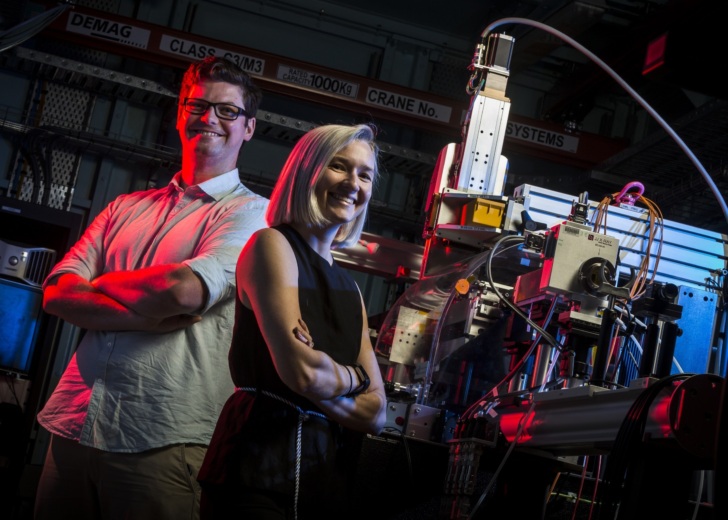Modern day ‘white smokers’ – towers of inorganic salts deposited alongside geothermal vents in the ocean floor – are thousands of meters under the sea. They occur when superheated hydrothermal fluid mixes with near-freezing seawater. They offer us a tantalising glimpse of structures in which life may have begun.
Of course, our brain chemistry is significantly more complex than a prehistoric pimple on the ocean floor, but the chemistry that occurred in this almost alien environment is preserved within every cell of our body, indeed it is baked into our biochemistry.
Florey dementia researcher, Dr Simon James, observes the close alignment between Earth’s ancient geochemistry and our brain’s biochemistry and concludes that the two must be linked.
“The theory is that pores in the hydrothermal vent chimneys provided the primordial templates for cells,” says Simon.
“The thin mineral walls of their interconnected micropores separated the internal space from the surrounding sea water, which gave rise to pH, salt and temperature gradients mirroring those seen in modern cells. In this environment allowed the creation of true, single celled organisms with their own membranes.”
Some of the same ancient enzymes drive our brain cell metabolism, and many of these possess activity that mirrors, at the atomic level, the structures of the iron-rich minerals that made up these ancient vents.
“In a way, before life could leave its watery inorganic cradle and evolve into the rich and varied biosphere of modern times it needed to ‘chip off’ some of this ancient rock.”
Accelerating worms at lightning speed
Meanwhile, Simon is exploiting his chemical training, and access to Australia’s most powerful X-ray microscope at the Australian Synchrotron, to further interrogate iron’s role in the ageing process.
“By blasting the microscopic worm, C. elegans, with high powered X-rays, I am able to visualise how iron reacts with other biomolecules, and ideally, how the damaging effects of too much iron in the ageing brain could be kept under control.”
Lewy body dementia
Simon’s colleague, Dr Erin McAllum, is also logging some serious hours at the Australian Synchrotron.
Erin researches Lewy body dementia, which can be thought of as a combination of Alzheimer’s and Parkinson’s diseases. Patients show a similar, though more rapid, cognitive decline as with Alzheimer’s, but under the microscope, the pathology looks a lot more like Parkinson’s disease.
Erin is focusing on the role of copper in the Lewy bodies, the eponymous protein clumps that accumulate inside diseased brain cells.
So specialised are the techniques required to tease apart diseases at this molecular level that Erin has been awarded a Victoria fellowship to travel to the University of Bordeaux to become versed in new chemical imaging techniques.
Upon her return, Erin will be one of only a handful of Australians able to use these techniques to measure the chemical changes occurring in diseases like Lewy body dementia, leading to new therapies for this debilitating disease that will affect increasing numbers of Australians as our population ages.
For more news of Simon’s and Erin’s research, visit the latest Florey Annual Report.

